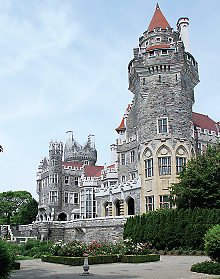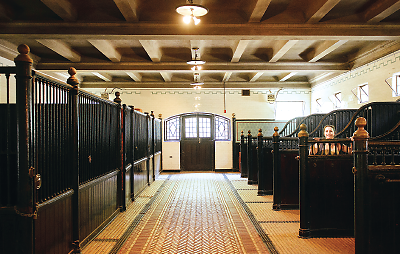Enjoy the Opulence of a Bygone Era at Casa Loma
Abstract
This elegant 98-room castle built by Canadian financier Sir Henry Pellatt in 1914 harkens back to the days of kings, knights, and maidens fair.
Like many a youth, Sir Henry Pellatt dreamed of living in a castle and feeling like a king. Unlike most other dreamers, though, Pellatt developed the means to make that dream a reality.

Overlooking Toronto from its hilltop perch, Casa Loma was completed in 1914 at a cost of over $3.5 million and was the largest private residence in Canada on its completion.
One of the leading Canadian financiers of the late 19th century, Pellatt was a shrewd investor in land, railroads, and electricity and amassed a fortune fit for royalty. In 1914, following three years of labor and incurring over $3 million in costs, Casa Loma, a hilltop castle overlooking the city of Toronto, was completed.
However, the same financial tides that helped Pellatt realize his vision soon receded, and he and his wife were forced to sell the estate a few years after moving in. The building experienced its own turbulence over the years as well, but thanks to the efforts of the Kiwanis Club and other benefactors, today it still stands on that hill as one of Toronto’s top tourist attractions.
From the moment people enter the castle and bask in the Great Hall and its 60-foot ceilings, they are surrounded by opulence. While visitors cannot explore all seven floors, 98 rooms, and 64,000 square feet of the castle, there is plenty to admire.
Some of the highlights include the Oak Room, featuring hand-carved oak panels and beams that took French artisans three years to create and the hallway on the main floor modeled after Peacock Alley in Windsor Castle. (Pellatt, the son of British immigrants, was a noted Anglophile, and homages to his heritage are peppered throughout his estate.)
Besides the Old World splendor, Casa Loma also boasts many modern marvels—for its time. The building contains an elevator, a central vacuum system, and thousands of electric lights. Plumbing was also quite sophisticated, as Casa Loma features steam pipes that helped keep the flowerbeds in the conservatory warm, while pipes filled with ammonia and brine were used to chill the wine cellar. (The wine cellar is also connected to Henry Pellatt’s study by a secret passage—another medieval touch.)

At Casa Loma, even the stables (which can be accessed from the house via an underground passage) speak of opulence.
Visitors who make it to the third floor will be rewarded with a small museum dedicated to the Queen’s Own Rifles of Canada, a reserve regiment in which Pellatt served, as well as a tribute to one of the building’s more interesting historical roles.
During World War II, Casa Loma was used as a clandestine base of operations for constructing an early sonar device known as ASDIC (Anti-Submarine Detection Investigation Committee). The castle was open to tourists during this time; the secret project was contained in one section of the building, guarded by only a simple sheet, a padlock, and an “Under Repairs” sign.
Once done with the building, visitors can explore the surrounding gardens, which should be in bloom and quite lovely in May, and take a peek at the stables and the carriage room, which houses a collection of vintage cars.
Eventually, the tour of Casa Loma will end, but visitors can go back down the hill with a smile and a spring in their step, as for a little while at least, they could feel like the welcome guests of a king. ■
Casa Loma is located at 1 Austin Place, a short walk from the Dupont subway stop. The admission fee includes a multimedia audio guide. More information about Casa Loma can be accessed here.



